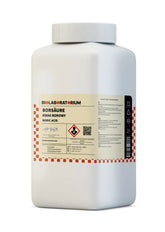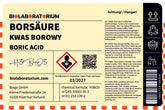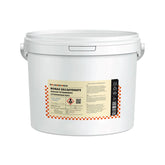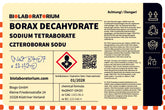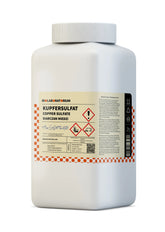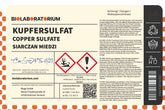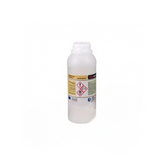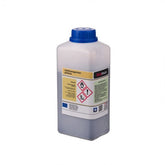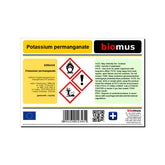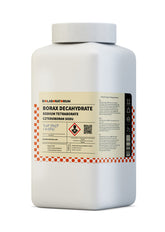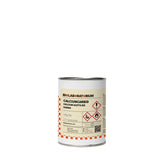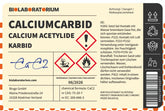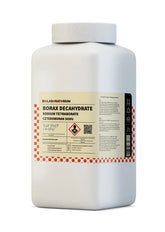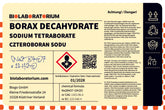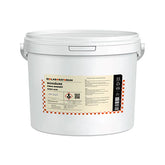Orthophosphoric acid: versatile helper in household and industry
Orthophosphoric acid is a chemical compound that plays an important role in many areas of our daily life and industry. Whether as a cleaning agent, fertilizer, or raw material for the production of products – this acid is a true all-rounder. In this blog post, we take a closer look at the properties and applications of orthophosphoric acid.
What is orthophosphoric acid?
Orthophosphoric acid, also known as phosphoric acid, is an inorganic acid with the chemical formula H3PO4. It consists of phosphorus (P), hydrogen (H), and oxygen (O) and belongs to the group of mineral acids.
Orthophosphoric acid is a colorless, viscous liquid at room temperature that flows easily in air. It is well soluble in water and has a characteristic, slightly acidic taste. The pH value of pure orthophosphoric acid is about 1-2, making it a very strong acid.
Properties of orthophosphoric acid
Besides its high acidity, orthophosphoric acid is characterized by other important properties:
- Solubility: It is well soluble in water, alcohol, and other polar solvents, but insoluble in non-polar solvents such as gasoline or oil.
- Oxidizing power: Orthophosphoric acid is a mild oxidizing agent and can oxidize other substances under certain conditions.
- Buffering effect: Aqueous solutions of orthophosphoric acid have a good buffering effect in the acidic pH range.
- Hygroscopy: The acid is strongly hygroscopic, i.e., it attracts moisture from the surrounding air.
- Thermal stability: Orthophosphoric acid is thermally stable up to about 200°C, but decomposition reactions can occur at higher temperatures.
Applications of orthophosphoric acid
The versatile properties of orthophosphoric acid make it an extremely useful substance in numerous application areas:
Cleaning and descaling
Due to its acidic properties, orthophosphoric acid is widely used as a cleaning agent. It can effectively remove lime scale, rust, and other deposits from surfaces. Especially in industry, such as in breweries or dairies, it is used for cleaning and descaling equipment.
Orthophosphoric acid can also be used at home as a limescale remover for fittings, tiles, or toilet bowls. However, caution is advised here, as the acid can irritate skin and eyes.
Fertilizer production
An important application of orthophosphoric acid is the production of phosphate fertilizers. By reacting with calcium phosphate, superphosphate is formed, a common phosphate fertilizer for agriculture.
Orthophosphoric acid also serves as a starting material for other phosphate fertilizers such as monoammonium phosphate (MAP) or diammonium phosphate (DAP). These fertilizers provide essential nutrients for plants and thus contribute to good soil quality.
Industrial applications
Orthophosphoric acid has a wide range of uses in industry:
- Metal processing: As a pickling agent in the metal industry, it removes oxide layers and improves the adhesion of coatings.
- Food production: In the food industry, it serves as an acidulant, preservative, and emulsifier.
- Pharmacy: In pharmacy, orthophosphoric acid is used as an excipient in medications.
- Electronics industry: Orthophosphoric acid is an important basic material for the production of semiconductors and displays.
- Fire extinguishing systems: Orthophosphoric acid-containing fire extinguishing powders are effective against fires involving solids, liquids, and gases.
Further applications
In addition to the main applications mentioned, orthophosphoric acid is used in numerous other areas:
- As a component of dental care products such as toothpastes or mouthwashes
- For the production of food additives such as emulsifiers or acidulants
- In the textile industry for dyeing and mordanting fabrics
- As a corrosion inhibitor for metals
- For the treatment of wastewater and soils
Safety aspects in use
Although orthophosphoric acid is versatile, caution must be exercised when handling it. As a strong acid, it can cause irritation and burns upon contact with skin and eyes. Therefore, appropriate protective measures such as gloves and safety goggles are essential when handling orthophosphoric acid.
The applicable safety regulations must also be observed during the storage and transport of the acid. Orthophosphoric acid should always be stored in suitable, tightly sealed containers to prevent leakage.
Conclusion
Orthophosphoric acid is an extremely versatile and useful substance that plays an important role in numerous applications. From cleaning to fertilizer production to industrial processes - this acid is a true all-rounder.
However, handling orthophosphoric acid requires special precautions due to its hazardous nature. With the right protective measures and safety regulations, orthophosphoric acid can be used safely and effectively.

